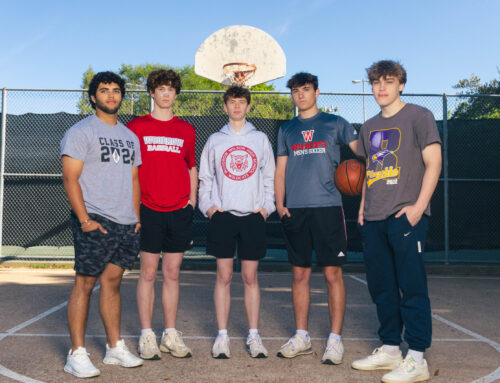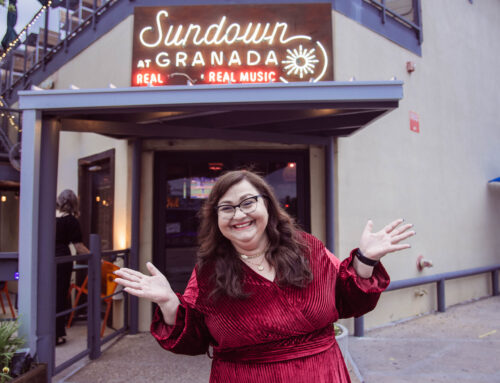
Kevin Sayre operates the flight simulator he built in his garage. Photography by Jessica P. Turner.
Kevin Sayre can fly anywhere in the world without leaving his garage.
This feat is possible because Sayre, a longtime East Dallas resident, has constructed a Boeing 737 flight simulator over the course of many years and hundreds of hours.
The actual building project can be traced back to a joystick and CD-ROM his wife, Peggy, purchased for him about 20 years ago while they were living on the east side of White Rock Lake.
“I think Peggy probably regrets that purchase,” Sayre says. Peggy, coincidentally, was a flight attendant for 40 years but does not share her husband’s hobby.
But Sayre says he has loved aviation since he was 8 years old, when he first rode on an airplane. The trip was from Rochester to New York City.
“They’d put a jacket and a tie on me,” Sayre says. “It was like a big deal. It was like a glamorous kind of thing. You’d get dressed up, and you’d be on your best behavior.”
He wanted to be a pilot, but poor vision prevented him from joining the military, which was the main pipeline to becoming a commercial pilot — though he did log some hours while taking flying lessons in his late 20s at the Addison Airport.

Longtime East Dallas resident Kevin Sayre. Photography by Jessica P. Turner.
So when Peggy came home with the joystick and CD-ROM, it didn’t matter that the visuals were cartoonish. He could fly.
“That kind of got me hooked,” Sayre says.
The simulator occupies the bulk of the Sayres’ detached garage — outside the house, Sayre says, because he values his marriage.
The door to the cockpit opens to reveal about a million doodads, seats for a pilot and co-pilot from a real 737 and, of course, the view “from the air,” which is provided by three curved monitors. It takes seven computers, several speakers and at least five software programs to run the operation.
Sayre’s software uses satellite imagery and allows him to customize the starting point, weather and time of day for his journeys. His favorites take him over San Francisco, New York City, Boston, Philadelphia and Florida.
The existing simulator is not the first iteration of Sayre’s work, but it’s the most thorough he’s ever had. The cockpit sits on a wheeled platform Sayre built. He commissioned a Canadian company to build the shell of the cockpit, and he bought component parts of the mock 737 from different companies.
Putting together the simulator was a self-taught process; there’s no how-to book for this. He consulted YouTube videos and websites of hardware manufacturers and spent days tending to details. Once, he says, it took a weekend to get the color on the head of a screw just right.
“It’ll always be sort of a work in progress,” he says.
Learning how to use the simulator took a while, but Sayre says it’s not as difficult as one might think. Flight is controlled with a throttle and yoke, the steering wheel of the plane, and foot pedals steer the plane when it’s on the ground.
The amount of time he spends in the garage varies. Sometimes he’ll fly for hours, days in a row. Other times, he’ll ignore the simulator for a month. But he always goes back to it, working to make it just a little bigger, a little better.
“I’m just obsessed with it.”





